Weekly Current Affairs (15th to 21st November 2024) Part - 1 | General Test Preparation for CUET UG - CUET Commerce PDF Download
GS2/International Relations
25th Session of the IRIGC-TEC
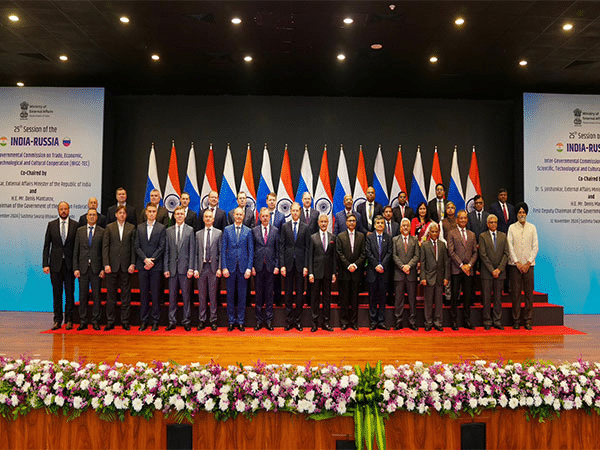
Why in News?
Recently, the External Affairs Minister of India and Russia's First Deputy Prime Minister co-chaired the session of the India-Russia Intergovernmental Commission on Trade, Economic, Scientific, Technological, and Cultural Cooperation (IRIGC-TEC) in New Delhi. The discussions underscored significant advancements in trade relations between the two countries and strategic collaboration across various sectors.
Key Highlights of the 25th Session of IRIGC-TEC
- USD 100 Billion Trade Target: India and Russia set an ambitious target to achieve USD 100 billion in trade by 2030, with both nations optimistic about reaching this goal.
- Progress in Trade and Diversification: The two countries have made substantial progress in addressing payment and logistics challenges. Currently, nearly 90% of India-Russia trade is conducted in local or alternative currencies, with the remainder in freely convertible currencies.
- Focus on Trade Diversification: There is a concerted effort to diversify trade to reduce the current trade imbalance, which is heavily influenced by India's significant crude oil imports from Russia.
- Enhancing Connectivity and Talent Mobility: The meeting emphasized the importance of improving connectivity through initiatives like the International North-South Transport Corridor (INSTC), Chennai-Vladivostok Corridor, and the Northern Sea Route. It also focused on enhancing talent mobility and skills development tailored to Russia's needs.
- Future Steps for Economic Cooperation: Working groups were assigned to expedite the finalization of the economic cooperation program leading up to 2030, which includes discussions on market access, services, investments, and technology exchange.
Key Highlights of India-Russia Trade
- Trade Targets: India and Russia initially aimed to raise bilateral investment to USD 50 billion and bilateral trade to USD 30 billion by 2025. However, for FY 2023-24, bilateral trade reached a historic high of USD 65.70 billion.
- Imports and Exports: India imports oil, petroleum products, fertilizers, minerals, and vegetable oils from Russia, while exporting pharmaceuticals, organic chemicals, and machinery.
- Major Russian Investments in India: Key sectors include oil and gas, petrochemicals, banking, railways, and steel.
- Major Indian Investments in Russia: Focus areas include oil and gas, as well as pharmaceuticals.
Key Challenges in India-Russia Trade
- Trade Imbalance: India experiences a trade deficit of approximately USD 57 billion with Russia, mainly due to crude oil imports.
- Geopolitical Reasons: India's growing relations with the US and the Quad, especially amid the Ukraine conflict, may limit deeper strategic cooperation with Russia.
- Sanctions and Compliance Issues: Sanctions imposed by Western powers on Russia complicate trade relationships, putting Indian companies in a challenging position.
- Diverse Trade Basket: Although energy trade has surged, efforts to diversify into sectors such as automotive parts and electronics have been slow, limited by Russia's declining international standing.
- Challenges in Connectivity Projects: Projects like the Chennai-Vladivostok Corridor are crucial but face competition from other connectivity routes, which could undermine their effectiveness.
How are India and Russia Addressing Trade Challenges?
- Special Rupee-Vostro Account Facility: India has introduced this facility to facilitate payments in local currencies, mitigating the impact of international sanctions.
- Free Trade Agreement (FTA) and Investment: Both countries are pursuing an FTA with the Eurasian Economic Union (EEU), which could streamline trade and reduce barriers.
- Facilitating Business Ventures: Russia shows interest in India's Make in India initiative, potentially leading to joint ventures.
- Bilateral Agreements: The signing of an Authorized Economic Operators (AEO) agreement aims to simplify trade processes, benefiting trusted exporters.
- Energy Sector Cooperation: A significant focus is on large-scale energy initiatives, including nuclear, solar, and wind energy developments.
- Russian Business Centre: Located in New Delhi, this center aims to bolster economic ties by facilitating business interactions and providing analytical support.
Conclusion
- India and Russia's complementary economies present a strong foundation for collaboration.
- As Russia shifts its focus towards Asia and the global landscape evolves into a multipolar order, strengthening bilateral ties will be crucial for mutual benefit.
Mains Question
Q: Analyze the India-Russia trade relations. Discuss the key sectors driving this partnership and the challenges faced in strengthening it.
GS3/Environment
Sustainability Concerns in India’s Agricultural Export Growth
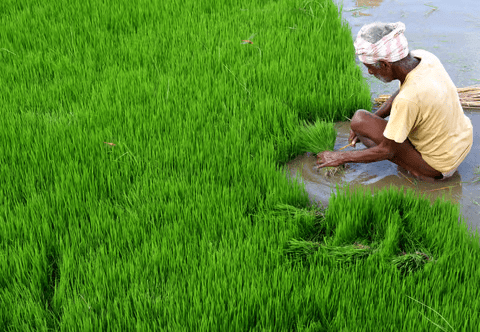
Why in news?
India's significant increase in agricultural exports, particularly of tea and sugar, has played a vital role in its economic development. However, this rapid growth has sparked essential discussions about sustainability issues, focusing on environmental impacts, resource management, and labor conditions.
What does Sustainability in Agriculture Mean?
- Economic Sustainability: It refers to maintaining long-term productivity while ensuring resources are not overexploited, rather than merely focusing on profitability.
- Ecological Sustainability: This involves the protection of natural ecosystems, minimizing the use of harmful chemicals, and effectively managing water resources to prevent environmental harm.
- Social Sustainability: This entails addressing labor rights, providing fair wages, and ensuring safe working conditions to foster equitable agricultural systems.
- The Lifecycle Approach: Sustainability should be considered throughout the entire lifecycle of agricultural products, from pre-sowing to post-harvest, rather than just during the production phase.
What are Sustainability Concerns in India’s Agriculture Sector?
Sustainability Concerns in Tea Production- Human-Wildlife Conflicts: Approximately 70% of tea plantations are adjacent to forests, leading to frequent conflicts with wildlife, particularly elephants, which can damage crops.
- Chemical Use: The prevalent use of synthetic pesticides, including harmful substances like DDT and Endosulfan, poses health risks and increases chemical residues in tea products.
- Labour Issues: Women make up over half of the tea plantation workforce, facing low wages and hazardous working conditions, with inadequate enforcement of the Plantations Labour Act, 1951.
Sustainability Concerns in Sugar Industry
- Water Management: Sugarcane cultivation requires 1,500 to 2,000 liters of water per kilogram, straining India's already limited water resources.
- Impact on Biodiversity: The extensive cultivation of sugarcane in Karnataka and Maharashtra has led to biodiversity loss by replacing natural grasslands and savannahs.
- Labour and Working Conditions: Workers in the sugar industry often find themselves in debt cycles, enduring long hours in tough conditions, and rising temperatures worsen their mental and physical health.
Sustainability Concerns in India's Agricultural Exports
- Supply Chain and Logistics: Inefficiencies in storage and rural cold chain infrastructure result in significant post-harvest losses, which negatively affect export quality and increase costs. In 2022, India faced food losses worth Rs 1.53 lakh crore (USD 18.5 billion).
- Climate Change: Extreme weather events such as droughts, floods, and heatwaves disrupt agricultural production, leading to soil degradation and water scarcity that diminish productivity and impact exports.
What Needs to Be Done to Address Sustainability Challenges?
Sustainability in Tea Industry
- Develop climate-resilient tea varieties and promote agroforestry practices to reduce climate risks.
- Ensure farmers receive a fair share of profits through direct market access and premiums for certified products.
- Implement better practices to manage human-wildlife interactions around tea plantations and stricter monitoring of chemical residues for safer production.
Sustainability in Sugar Industry
- Shift to sustainable irrigation methods like drip irrigation to conserve water, potentially reducing water usage by 40-50%.
- Utilize by-products of sugarcane, such as bagasse for bioenergy and vinasse as fertilizer, to enhance resource efficiency and promote a circular economy.
- Transition sugar mills to biorefineries to generate energy from waste, reducing reliance on non-renewable sources.
- Improve working conditions, wages, and access to healthcare and education for laborers and workers in sugar mills.
Sustainability in Agricultural Exports
- Promote sustainable crop selection, focusing on resilient crops like millets, which are beneficial for both domestic use and exports.
- Balance domestic needs with export demands to avoid over-reliance on specific commodities and stress on natural resources.
- Enhance supply chain sustainability by fostering collaboration and transparency to integrate sustainability goals effectively.
- Emphasize environmental conservation practices to maintain sustainable production levels without depleting resources, including reduced water usage and organic farming methods.
Mains Question
Q: How can India achieve sustainable economic growth in agriculture, considering both the need for export-driven growth and the necessity to conserve natural resources?
GS1/Indian Society
Maha Kumbh Mela 2025

Why in news?
The Maha Kumbh Mela 2025, a revered pilgrimage, is scheduled to take place in Prayagraj from January 13 to February 26, 2025. This event is expected to attract millions of pilgrims who seek spiritual cleansing, cultural celebration, and a sense of unity.
- The term 'Kumbh' is derived from 'kumbhak,' which refers to the sacred pitcher that holds the elixir of immortality.
About the Kumbh Mela
- The Kumbh Mela is recognized as the largest peaceful gathering of pilgrims worldwide, where attendees bathe in a sacred river.
- This gathering occurs at four principal locations:
- Haridwar, situated on the banks of the Ganges River.
- Ujjain, along the Shipra River.
- Nashik, by the Godavari River (referred to as Dakshin Ganga).
- Prayagraj, at the confluence of the Ganges, Yamuna, and the mythical Saraswati River.
- The Kumbh Mela is celebrated four times over a 12-year cycle.
- Ardh-Kumbh Mela is conducted every six years in Haridwar and Prayagraj.
- The Maagh Kumbh takes place annually in the month of Maagh (January-February).
Historical Evolution
- Background: The Maha Kumbh Mela, described by Adi Shankaracharya, has its roots in the Puranas. It narrates the story of gods and demons fighting for the sacred pitcher of Amrit, with Lord Vishnu (as Mohini) securing it from the demons.
- Ancient Origins: The Kumbh Mela began during the Maurya and Gupta periods (4th century BCE to 6th century CE) as small pilgrim gatherings from across the Indian subcontinent, gaining significance as Hinduism flourished, especially under Gupta rulers.
- Medieval Patronage: The event received support from royal families such as the Chola and Vijayanagar empires, as well as the Delhi Sultanate and Mughal Empire. Akbar notably promoted religious tolerance and allowed Naga Sadhus to lead the royal procession to the Mela in 1565.
- Colonial Period: British officials, intrigued by the scale and diversity of the Kumbh Mela, documented the festival during the 19th century. James Prinsep recorded its rituals and socio-religious dynamics.
- Post-Independence Significance: The Kumbh Mela symbolizes national unity and cultural heritage, recognized by UNESCO in 2017 as an intangible cultural heritage of humanity for preserving ancient traditions.
Kumbh 2019 Achievements
- Set three Guinness World Records for the largest traffic and crowd management plan.
- Conducted the biggest painting initiative of public sites under the Paint My City scheme.
- Established the largest sanitation and waste disposal mechanism.
Significance of Kumbh
- Spiritual Relevance: Bathing at the Triveni Sangam (the confluence of the Ganges, Yamuna, and Sarasvati) is believed to cleanse sins and provide spiritual liberation, or Moksha.
- Cultural Showcase: The Kumbh Mela features devotional kirtans, bhajans, and traditional dances like Kathak, Bharatanatyam, and Kuchipudi, emphasizing themes of spiritual unity and divine love.
- Astrological Timing: The timing of the event is determined by the alignment of the Sun, Moon, and Jupiter, making it particularly auspicious for spiritual practices. If the Kumbh is held when a planet is in Leo, it is termed Simhastha Kumbh.
Rituals and Activities
- Shahi Snan (Royal Bath): This ceremonial bath involves a procession of saints and Akharas (spiritual orders) and marks the commencement of the Maha Kumbh Mela. It is also known as 'Rajyogi Snan,' signifying its importance.
- The term 'akhara' comes from 'akhand,' meaning indivisible. Adi Guru Shankaracharya aimed to unify ascetic groups to protect the 'Sanatan' way of life.
- Akharas represent social order, unity, cultural values, and ethics, focusing on spiritual and moral principles such as virtue, self-control, compassion, and religiosity.
- Akharas can be categorized by their favored deity:
- Shaiva Akharas: Worshippers of Lord Shiva.
- Vaishnava Akharas: Followers of Lord Vishnu.
- Udaseen Akharas: Founded by Chandra Dev, son of the first Sikh Guru, Guru Nanak.
- Peshwai Processions: This grand display features traditional parades of Akharas, known as 'Peshwai,' with participants riding elephants, horses, and chariots.
- Spiritual Discourses: The event includes spiritual talks led by esteemed saints and spiritual leaders, alongside a vibrant mix of Indian music, dance, and crafts.
Mains Question
Q: Discuss how Kumbh Mela reflects India’s cultural diversity and spiritual heritage.
GS2/Governance
Reforming Khap Panchayat
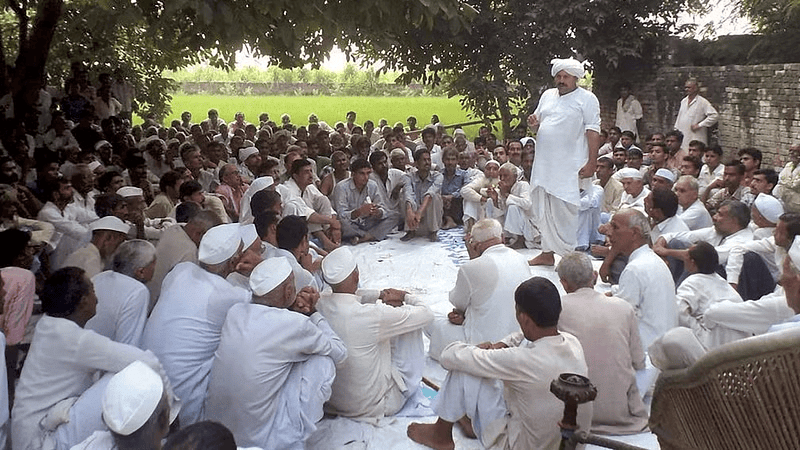
Why in news?
Khap Panchayats have recently garnered attention due to various leaders pushing for progressive reforms aimed at addressing critical social and economic challenges such as unemployment, education, and rural development. There are ongoing efforts to modernize and regulate these councils, integrating them into formal Alternative Dispute Resolution (ADR) systems to enhance governance and accountability.
What is Khap Panchayat?
- About: Khap Panchayats are traditional, community-based councils found mainly in North India, particularly in Haryana and Uttar Pradesh. They serve as informal judicial bodies that emerged centuries ago among kinship groups (Khaps) to tackle social and governance issues within their communities.
- Historical Role: Historically, these councils played a crucial role in maintaining social order in rural areas, providing a forum for conflict resolution within caste hierarchies and operating alongside formal legal systems, prioritizing customary norms.
Issues with Khap Panchayats
- Patriarchal Practices: Khap Panchayats are often linked to gender inequality, enforcing strict social norms that limit women's autonomy.
- Honor Killings: They are notorious for opposing inter-caste and same-gotra marriages, occasionally endorsing severe actions like honor killings.
- Legality Concerns: The decisions made by these councils often clash with constitutional rights, contradicting the principles of personal liberty, equality, and dignity.
- Caste and Social Inequities: Their emphasis on maintaining caste hierarchies perpetuates discrimination and exclusion.
Gender Dynamics and Evolving Roles of Khap Panchayats
- Support for Women Athletes: Some Khap Panchayats have recognized and celebrated successful women athletes, fostering a growing culture of sports participation among women.
- Gender Justice: They have shown support for movements such as the 2023 wrestlers’ protest against sexual harassment, indicating a shift towards gender advocacy.
- Example: Meham Chaubisi, one of the most powerful Khaps in Haryana, is increasingly involved in promoting justice, social change, and addressing women's issues.
What Can Be Done to Make Khap Panchayat a Part of Formal ADR?
- Promote Alternative Dispute Resolution (ADR): Integrate Khap Panchayats into the official ADR framework by legalizing their mediation roles within a structure that aligns with constitutional values.
- Offer Training: Provide training for Khap leaders in mediation and arbitration techniques to enhance their skills for unbiased dispute resolution.
- Legal Regulation: Develop laws that outline the roles and limitations of Khap Panchayat activities, ensuring their decisions comply with Indian laws and human rights.
- Establish Oversight Mechanisms: Create monitoring systems to oversee Khap actions, preventing unconstitutional practices like honor killings or forced marriage annulments.
- Shift Focus to Development: Some Khap leaders are advocating for progressive approaches to tackle social and economic challenges, aiming to modernize the councils.
- Awareness and Accountability: Launch public awareness campaigns to educate communities about the significance of justice and equality, holding Khap Panchayats accountable for actions that undermine these principles.
- Collaboration with Formal Institutions: Encourage partnerships between Khap Panchayats and local governance structures to foster inclusive decision-making processes.
- Involve Judiciary Representatives: Ensure that the decisions made by Khap Panchayats are legally sound by involving judicial representatives in their processes.
Conclusion
- While Khap Panchayats are deeply rooted in tradition, they must adapt to become effective instruments of governance. By aligning their practices with constitutional values, promoting community development, and embracing reforms, they can maintain their cultural relevance while positively contributing to rural governance.
- Transitioning Khaps into ADR entities will necessitate legal regulations, community awareness, and strong oversight to ensure justice, equity, and social harmony.
Mains Question
Q: What are the advantages of Alternative Dispute Resolution (ADR)? How can integrating Khap Panchayats into the ADR system help alleviate the burden on India’s judicial system?
GS2/Governance
State Finance Commission

Why in News?
According to the Ministry of Panchayati Raj, all states, except Arunachal Pradesh, have established State Finance Commissions (SFCs). The 15th Finance Commission has expressed serious concerns regarding the delays in the formation of SFCs.
About State Finance Commissions (SFCs)
- SFCs are constitutional authorities created by states under Article 243-I of the Indian Constitution.
- The Governor is mandated to set up an SFC within one year of the enactment of the 73rd Constitutional Amendment Act, 1992, and every five years after that.
Mandate
- SFCs primarily recommend how to distribute financial resources between the state government and local bodies, which include Panchayati Raj Institutions (PRIs) and urban local bodies (ULBs).
Finance Commission on SFCs
- The 15th Finance Commission urged states to form SFCs, implement their recommendations, and provide an action report to the legislature.
- It proposed withholding grants to states that fail to comply with these requirements.
Role of Ministry of Panchayati Raj
- This ministry is responsible for certifying state compliance with constitutional mandates regarding SFCs before releasing grants for the fiscal years 2024-25 and 2025-26.
Importance of Appointing SFCs
- Constitutional Requirement: Establishing SFCs every five years is a constitutional obligation aimed at ensuring the financial health and autonomy of local bodies.
- Fiscal Devolution: The equitable distribution of state revenues among local entities guarantees a fair allocation of funds, enhancing the financial capacity of local bodies.
- Enhancing Accountability: By assessing financial needs and recommending efficient resource utilization, SFCs can motivate local governments to improve service delivery and responsiveness to citizens.
- Addressing Local Needs Directly: Local governance bodies are crucial for daily services such as sanitation, health, education, and infrastructure. Adequate funding and financial autonomy, supported by SFC recommendations, are essential for enhancing service quality.
- Bridging the Functional and Financial Gap: Local bodies often struggle with unfunded mandates due to insufficient financial resources. SFCs can recommend financial allocations based on responsibilities, ensuring local governments can meet their obligations effectively.
- Political and Administrative Decentralisation: SFCs play a broader role beyond fiscal recommendations, empowering local elected officials such as municipal councillors and panchayat pradhans.
Challenges Facing State Finance Commissions (SFCs)
- Compliance Issues: The Finance Commission (2021-26) noted that only nine states had set up their SFCs, although the deadline for all states was in 2019-20.
- Lack of Political Will: There is significant resistance among state governments to fully transfer powers and resources to local bodies as intended by the 73rd and 74th constitutional amendments.
- Resource Deficiencies: SFCs often begin with no organized data, hampering their effectiveness in making informed recommendations.
- Deficiencies in Expertise: Many SFCs are led by bureaucrats or politicians rather than domain experts or public finance professionals, which undermines the quality and credibility of their recommendations.
- Opaqueness: States frequently do not present Action Taken Reports (ATRs) in the legislature post-SFC recommendations, which diminishes transparency and accountability.
- Ignorance of SFC Recommendations: There is a trend of non-compliance with SFC recommendations by state governments, which weakens the SFCs' influence over local fiscal policies.
- People’s Resistance: Urban local bodies often experience neglect, compounded by low political awareness and limited public participation, which exacerbates the challenges of fiscal decentralization.
Way Forward
- Compliance with Constitutional Deadlines: States must establish SFCs every five years as mandated by the constitution, with accountability for those that miss deadlines.
- Reducing Political Resistance: State governments should recognize the benefits of empowering local governments, which leads to improved services and accountable governance.
- Involvement of Public Finance Experts: States should ensure SFCs are chaired by economists and finance specialists, not just bureaucrats and politicians, to enhance their effectiveness.
- Strengthening Local Data Systems: Local bodies should implement modern data systems to facilitate accurate financial reporting, helping SFCs make informed recommendations.
- Transparency in Implementation: States must present in the legislature their plans and timelines for executing SFC recommendations to foster accountability.
- Incentive Framework: The Ministry should create a rewards system for states that excel in SFC compliance, encouraging improvements in local governance.
Mains Question
Q: Discuss the role of State Finance Commissions (SFCs) in strengthening local governance in India.
GS3/Environment
CSR’s Contributions to Agriculture Sustainability

Why in news?
With increasing contributions, the focus is on how Corporate Social Responsibility (CSR) can support Indian agriculture to become both economically viable and ecologically sustainable.
Why is CSR Needed in Agriculture?
- High Dependence on Agriculture:Nearly 47% of India's population relies on agriculture for their livelihood, significantly higher than the global average of 25%.
- Small and Marginal Farmers:More than 70% of rural households depend on agriculture, with 82% of these farmers categorized as small and marginal.
- Poor Access to Finance: High interest rates and limited access to formal credit systems hinder farmers from acquiring necessary equipment, seeds, and fertilizers, which restricts their growth potential.
- Building Market Linkages: Inadequate rural infrastructure, including poor storage, transport, and irrigation, causes post-harvest losses and weakens market access.
- Environmental Challenges: Unpredictable weather increases crop failures and livestock loss, making agriculture more vulnerable to disasters like floods and droughts.
- Soil Degradation:Overuse of chemical fertilizers and poor irrigation practices have led to soil degradation, diminishing fertility and crop yields.
- Water Scarcity:Scarcity of water poses a significant threat to crop and livestock production, necessitating better irrigation and water management practices.
How CSR Can Help in Agriculture?
- Technological Innovations: CSR initiatives can incorporate advanced technologies such as sensors, drones, GPS, and data analytics into Precision Agriculture, helping farmers optimize irrigation, fertilization, pest management, and crop health.
- Financial Access:Collaboration between companies and financial institutions can provide low-interest loans and subsidies, improving farmers' access to affordable financing.
- Renewable Energy: Encouraging the use of renewable energy sources like solar and wind power can promote environmentally sustainable farming practices.
- Biotechnology and GMOs: CSR can foster the development of biotechnology and GMOs to create crops that are more resilient to pests and diseases, enhancing yields and food security.
- Empowering Farmers: Providing access to knowledge and skills training equips farmers with modern agricultural practices, boosting productivity and reducing risks.
- Improved Market Access: CSR can facilitate market linkages, integrating farmers into value chains and ensuring they receive fair prices for their produce.
What are Challenges in CSR Implementation in Agriculture?
- No Clear Demarcation: CSR activities related to agriculture are often not distinctly defined, leading to ambiguity in their implementation.
- Short-Term Focus:Many CSR programs prioritize short-term results, while agriculture requires sustained, long-term investment for meaningful impact.
- Measurement of Social Impact: Assessing the social impact of CSR initiatives in agriculture is often complex and subjective, particularly in rural areas.
- Not-Aligned with Business Goals: Companies may struggle to align CSR efforts in agriculture with their business strategies, reducing their effectiveness.
- Ignorance of Agriculture:A significant portion of CSR funding is directed towards education and health, with agricultural initiatives receiving less attention.
- Fragmented Approach:CSR initiatives often address isolated agricultural issues without tackling broader challenges such as climate change and market access.
- Lack of Suitable NGOs:Corporations may face difficulties in finding NGOs that align with their CSR objectives in rural areas.
- Disparity in CSR Spending:A large share of CSR funds tends to go to more developed states, leaving less funding for underdeveloped regions.
- Inefficient Allocation: Companies often direct CSR efforts to regions where they have operations, rather than areas with greater needs.
What is CSR?
- About: CSR is a corporate practice where companies voluntarily incorporate social, environmental, and ethical considerations into their operations and stakeholder interactions, focusing on areas such as environmental sustainability, poverty alleviation, and healthcare.
- India's CSR Mandate: India was the first country to legally mandate CSR under Section 135 of the Companies Act, 2013, with Rs 1.84 lakh crore allocated from 2014 to 2023.
- Legislative Framework: The CSR framework in India is governed by the Companies Act, 2013, specifically Schedule VII and the Companies (CSR Policy) Rules, 2014, which set mandatory requirements for certain companies starting in April 2014.

- CSR Criteria: CSR provisions apply to companies meeting any of the following criteria in the previous financial year: a net worth over Rs 5 billion, a turnover exceeding Rs 10 billion, or a net profit greater than Rs 50 million. Such companies must allocate at least 2% of their average net profit over the last three years on CSR activities. Newly incorporated companies with less than three years of operations will consider the average net profit available.
- National CSR Data Portal: This initiative by the Ministry of Corporate Affairs aims to share CSR-related data and information.
- CSR Activities: Companies can include various activities in their CSR policies as detailed in Schedule VII.
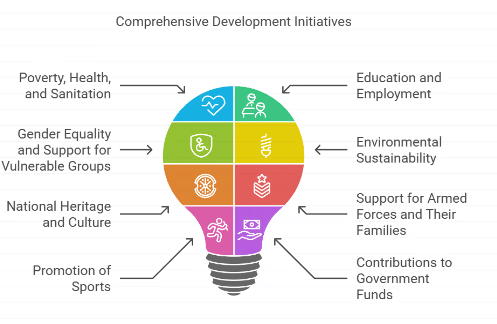
Way Forward
- Clearer Definition: Establishing a defined sector for agricultural CSR initiatives will improve resource allocation and ensure funds effectively support agricultural development.
- Financial Inclusion: Providing farmers with access to affordable financial services empowers them to invest in quality inputs, adopt innovative technologies, and strengthen their resilience to environmental challenges.
- Supply Chain Stability: Agriculture is crucial for many industries, including food and pharmaceuticals. Investing in sustainable practices through CSR helps secure the long-term stability of these supply chains.
- Competitive Advantage: Addressing agricultural issues like water conservation and precision farming can lead companies to develop innovative technologies that distinguish them from competitors.
- Alignment with Business Goals: Companies should align their CSR initiatives with their core values, such as food companies supporting agricultural technology firms, benefiting both their business and the sector.
- Equitable Development: Companies should direct CSR efforts towards regions facing agricultural challenges, regardless of their operational presence, to promote more equitable development.
Mains Question:
Q: Discuss the role of CSR in promoting agricultural sustainability and the challenges faced in its implementation.
GS3/Economy
India's Transition Towards Workforce Formalisation
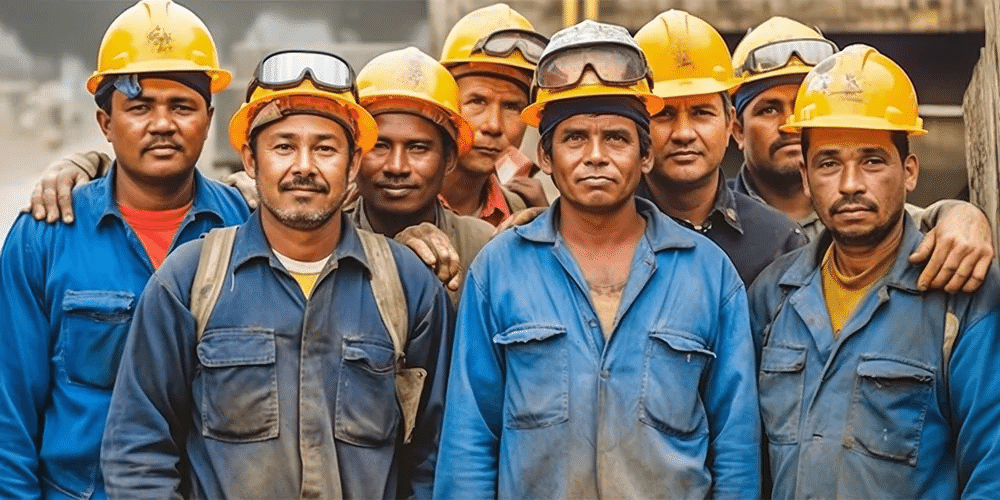
Why in News?
India is experiencing a significant transformation towards workforce formalization, which is redefining the landscape of job structures, enhancing employment security, and extending social benefits to millions. This shift aims to ensure a broader segment of the population is integrated into social security systems, providing greater economic stability and a more secure future. The Employee’s Provident Fund Organisation (EPFO) plays a pivotal role in this process, facilitating the inclusion of more workers into social security frameworks.
What is Formalization of the Workforce?
Definition
- Workforce formalization is an essential step toward creating a fair and robust Indian economy.
- It empowers workers by improving their social security and working conditions while also strengthening vital economic aspects like productivity, tax compliance, and global competitiveness.
- Formalization occurs when jobs transition from the informal sector—characterized by small, unregistered businesses and daily wage labor—to the formal sector, where employees benefit from contracts, job security, and various benefits.
Features
- Businesses operate within established legal frameworks, ensuring compliance with laws and regulations.
- Increases tax revenues by expanding the tax base and promoting a fair distribution of the tax burden.
- Employees gain access to social security, healthcare, and benefits under labor laws, including minimum wage guarantees, retirement benefits, pensions, and insurance.
- Formal businesses enjoy easier access to financial services and credit from banks and institutions.
- Encourages entrepreneurship, enhances competitiveness, and fosters overall economic growth.
What is Significance of Workforce Formalisation for the Indian Economy?
- Widespread Informal Employment: About 85% of India’s workforce operates in the informal sector, lacking protection under formal labor laws or social security systems. Formalization improves access to social security, healthcare, and pensions, thus reducing vulnerability to economic shocks.
- Accurate Data Collection: Formalization allows for improved data collection on employment trends, facilitating effective policymaking and economic planning.
- Increased Tax Revenue: A formal workforce contributes more to the tax base, enabling the government to finance public services and infrastructure development.
- Reduce Black Money: Enhances transparency, making it more challenging to engage in money laundering and other illegal activities.
- Digital Inclusion: Encourages the adoption of digital tools and technologies, leading to improvements in efficiency and transparency within the workforce.
- Attracts Investment: A formal workforce creates a better operating environment for businesses, attracting both domestic and international investments.
What is EPFO and its Role in India's Workforce Formalization?
- About: The EPFO is recognized as one of the largest social security organizations globally, providing a comprehensive range of social security benefits to millions of workers across India. Established under the Employees' Provident Funds & Miscellaneous Provisions Act of 1952, the EPFO manages over 29.88 crore accounts, highlighting its extensive reach and the scale of financial transactions it oversees. The organization operates under the Ministry of Labour & Employment, Government of India.
- Benefits of EPFO: Offers long-term financial security through various schemes including retirement funds, insurance under the Employees' Deposit Linked Insurance (EDLI) Scheme, monthly pensions via the Employees' Pension Scheme (EPS), and allows partial withdrawals for emergencies, education, or home purchases under the EPF Scheme.
- Role of EPFO in Increased Formalization: From 2017 to 2024, over 6.91 crore members joined EPFO, with a record 1.38 crore new members registered in the fiscal year 2022-23. In July 2024 alone, nearly 20 lakh new members were added, indicating a steady increase in registrations. Many members transferred their funds when changing jobs, ensuring continued access to social security benefits. A significant number of new EPFO members are young individuals, many being first-time job seekers, along with an increase in female registrations, reflecting a positive trend towards a more inclusive workforce.
What are the Challenges in Workforce Formalisation in India?
- Cost of Formalisation: MSMEs (Micro, Small, and Medium Enterprises) and small businesses find the process of workforce formalisation costly and cumbersome, as approximately 80-90% of India's workforce is informal. Many small businesses prefer to remain informal to avoid compliance burdens. Simplifying compliance and reducing financial constraints are essential to overcoming this hurdle.
- Seasonal Workforce: Migrant and seasonal workers in sectors like agriculture and construction frequently lack formal contracts due to their transient nature and often do not have the necessary documentation for formalisation.
- Resistance to Change: Workers in the informal sector may resist formalisation due to a preference for flexible work arrangements and a lack of awareness regarding the benefits of formal employment.
- Digital Divide: Limited access to digital tools, particularly in rural areas, hampers formal employment despite advancements like Aadhaar and Unified Payments Interface (UPI).
- Skill Gaps: Informal workers often lack the requisite skills for formal jobs, compounded by a shortage of accessible skill development programs for these individuals.
- Gender Inequality: Women face unique challenges to formal employment, including socio-cultural barriers, inadequate childcare services, and gender bias in the workplace.
Way Forward
- Incentivise Formalisation: Policies should aim to reduce the cost of formalisation and provide incentives for businesses to transition to the formal sector.
- Improve Financial Inclusion: Expanding access to banking services through initiatives like the Pradhan Mantri Jan Dhan Yojana (PMJDY) and promoting digital payment systems will help integrate more businesses into the formal economy.
- Education and Skill Development: Enhancing access to quality education and vocational training under the Skill India Mission will equip workers with necessary skills for formal employment.
- Promote MSMEs: Strengthening MSMEs through financial support and resources will enhance their competitiveness globally, facilitating formalisation and job creation.
- Targeted Schemes: Implementing specific schemes to formalise tribal workers and ensuring they are included in social security programs like Pradhan Mantri Jeevan Jyoti Bima Yojana and Pradhan Mantri Suraksha Bima Yojana.
Conclusion
- The journey towards formalization significantly strengthens India's workforce by providing essential job security and a safety net, especially critical during uncertain times such as the Covid-19 pandemic.
- The increase in EPFO registrations underscores India's progress towards a more organized economy, aiming to ensure a secure and brighter future for millions.
Mains Question:
Q: Discuss the importance of formalising the Indian economy. How does this transition benefit workers and the country’s economic stability?
GS2/Governance
Conduct Rules for Civil Servants
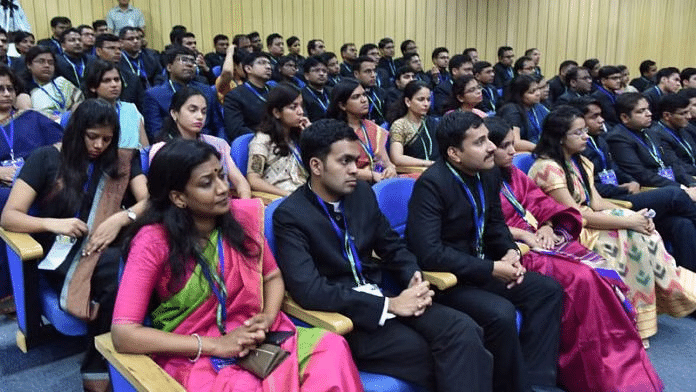
Why in news?
Recently, Kerala has suspended two IAS officers for violating the All-India Services (Conduct) Rules, 1968. One officer made derogatory comments on social media about a senior colleague, while the other allegedly created a religious WhatsApp group.
What do the All-India Services (Conduct) Rules, 1968 State?
The All-India Services (Conduct) Rules, 1968 establish ethical and professional standards intended to ensure impartiality, integrity, and adherence to constitutional values among IAS, IPS, and Indian Forest Service officers.
- Ethical Standards: Officers are required to demonstrate high ethical standards, integrity, and honesty. They should remain politically neutral, accountable, and transparent in their actions and decisions.
- Supremacy of Constitutional Values: Officers must uphold constitutional values, reflecting their role as public servants dedicated to the nation's legal framework.
- Engagement in Public Media: Officers can engage in public media in a professional capacity, but they are prohibited from criticizing government policies using these platforms.
- Legal and Media Appeals: Officers may seek legal redress or defend their official actions through the court or media, without needing prior government approval.
- General Conduct Clause: Officers must avoid any behavior deemed "unbecoming" of their service, which ensures that they uphold high standards of decorum and professionalism at all times.
What are the Issues with AIS Rules, 1968?
- Lack of Explicit Social Media Guidelines: The current rules do not clearly define officers' communication and conduct on social media, leading to ambiguity and difficulty in setting boundaries for appropriate behavior.
- Unbecoming Conduct Clause: The term "unbecoming of a member of the service" is vague and undefined, resulting in inconsistent enforcement and potential for abuse.
- Power Imbalance in Enforcement: Enforcement of these rules often depends on senior officers, putting junior officers at risk of bias and arbitrary actions by their superiors.
What is the Role of Civil Services in Democracy?
- Policy Formulation: Civil servants contribute technical expertise and practical insights vital for the formulation and determination of public policy.
- Implementation of Policies: They are responsible for executing policies enacted by the legislature, overseeing the practical application of laws and directives.
- Delegated Legislation: Civil servants draft detailed rules and regulations under the framework established by the legislature, ensuring effective implementation of government operations.
- Administrative Adjudication: They possess quasi-judicial powers to resolve cases involving citizens’ rights and obligations, ensuring quick and fair decisions, particularly for vulnerable groups and technical issues.
- Stability and Continuity: Civil servants provide stability and continuity in governance during politically driven changes, ensuring smooth administrative processes despite leadership transitions.
- Guardians of National Ideals: They safeguard the nation’s ideals, values, and beliefs, playing a crucial role in maintaining the social, economic, and political fabric of the country.
Way Forward
- Precise Social Media Guidelines: The rules should clearly outline the boundaries for officers' engagement on social media, enabling responsible communication about government initiatives.
- Clarifying the ‘Unbecoming Conduct’ Clause: The ambiguous term should be clarified with an illustrative list based on past instances where actions were taken under this clause.
- Responsible Anonymity: Reinforcing the need for neutrality and impartiality is crucial, especially in the digital age where visibility often overshadows discretion.
- Judicious Use of Social Media: Officers, particularly younger ones, must be reminded that social media should promote the dignity and impartiality of the civil service, avoiding personal opinions or partisan statements that could compromise their neutrality.
Mains Question
Q: How do the All-India Services (Conduct) Rules, 1968 ensure that civil servants maintain ethical standards in their professional conduct?
|
164 videos|626 docs|1131 tests
|





















